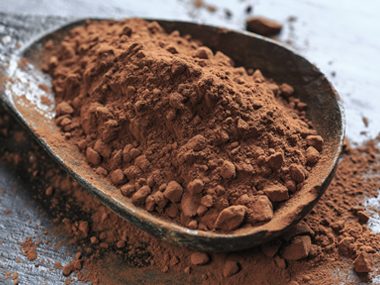There’s a reason smoking is so hard to quit; cigarettes are packed with a
shocking number of highly addictive chemicals like these.
What's in a cigarette?
Tobacco smoke is a complex chemical
mixture containing up to 4,800 combustion products, 2,000 of which are
known to be toxic substances. Fully 90 individual substances in tobacco
smoke have been classified as carcinogenic. What’s more, many of these
chemicals are included to amplify nicotine addiction, or to offset
unpleasant smells and tastes. Here’s a sample of what smokers take in
their lungs and blood vessels with each puff.
Excerpt from I Know You Like to Smoke, But You Can Quit—Now, copyright © Andreas Jopp, 2014. Reprinted by permission of the publisher, The Experiment. Available wherever books are sold.
Sugar amplifies your addiction.
It sounds innocuous enough, but burning
sugar produces acetaldehyde, which accelerates and amplifies the
addictive effect of nicotine.
Cocoa lets you inhale more deeply.
When cocoa burns, it becomes bromine and
enlarges the bronchial tubes, so more nicotine can be inhaled more
deeply. (Licorice has the same effect.)
Menthol reduces the sensation of irritation and pain.
It also calms the bronchial tubes and
expands them, resulting in deeper inhalation without any unpleasant
feeling or burning sensation. Menthol also masks the pungent taste and
makes smoke feel cooler and fresher. All cigarette brands today make use
of menthol additives even in normal cigarettes, which helps recruit
young “replacement smokers” by making inhalation easy for them.
“Light” cigarettes are just as hazardous.
Early studies at the beginning of the
1970s showed that if smoke is diluted with extra air, as light
cigarettes are, an addicted smoker merely takes deeper and stronger
puffs. So without even realizing it, “light” smokers achieve exactly the
same nicotine level as when previously smoking normal cigarettes. For
almost 30 years, “lights” stopped many smokers from quitting, as they
believed the cigarettes were allegedly healthier and less damaging. The
United States and EU have now banned terms such as “mild,” “low tar,”
“light,” “ultra light,” and “ultra” from continuing to deceive the
consumer.
Ammonium releases more nicotine.
This can be used to change the tobacco's
pH value to be less acidic and more basic, allowing more nicotine to be
released. When nicotine reaches the brain receptors more quickly it
provides a better kick, which leads to more severe addiction (and also
helps explain why one brand “tastes” better than another). Research
documents confirm that the cigarette industry has known this science
since 1962.
Levulinic acid smoothes tobacco taste.
This substance takes the edge off the
tobacco flavor and reinforces nicotine binding with the receptors in the
brain by some 30 percent.
Special filter systems make nicotine more available.
Special filters enhance removal of acid and the addition of chemical bases to improve nicotine availability.
Additives that provide better aroma:
One of the industry’s major marketing
challenges was the recent evolution of militant anti-smokers bothered by
smoke who fought to ban smoking. This led the tobacco industry to
research how it could reduce irritation and visibility of smoke and
improve its smell to minimize these complaints. There are some 300
industry patents for these additives alone. Among those for a better
smell include: acetylpyrazine, anethole, betacaryophyllene, cedrol,
ethyl 3-methylvalerate, furaneol, limonene, p-anisaldehyde, phenethyl
alcohol, “Aromatek 150,” and “Aromatek 245.”

Additives that cause less irritation:
These include such cryptic names as: aluminium sulfate, (NH4)2So4, NaH2Po4, “XLF-636,” “XLF-662,” “XLF-680,” and “XLF-755.”
Additives that make smoke less visible:
By reducing the conspicuousness of smoke,
cigarette makers hope to make smoking more socially acceptable. These
chemicals include: alumina sol-gel, MgCo3 sol-gel, MgCo3, H3Po4, K2P2O7,
CaCo3, calcium carbonate, Na2Co3 (sodium carbonate), calcium chloride,
citric acid, magnesium oxide, potassium acetate, potassium citrate,
sodium hexametaphosphate, glutaric acid, hydromagnesite, malonic acid,
potassium phosphate, magnesite, potassium succinate, magnesium
carbonate, monobasic potassium phosphate, calcium carbonate,
monopotassium phosphate, “Studio 26 blend,” and “XTH Studio blend.”
Want to kick the habit in 30 days?
Get more tips about the science of why we
smoke and how to stop (without gaining weight) and with proven
strategies you can personalize, read I Know You Like to Smoke But You
Can Quit Now. Learn more and buy the book here.












No hay comentarios:
Publicar un comentario